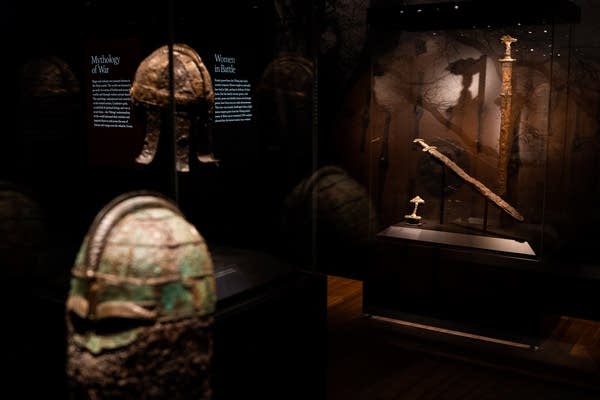Who knew? The marauding Vikings were also expert traders, craftsmen and farmers

Go Deeper.
Create an account or log in to save stories.
Like this?
Thanks for liking this story! We have added it to a list of your favorite stories.
Most of our current ideas about Vikings are based on the stereotype of the warrior savage, raping and pillaging from coast to coast during the early Middle Ages.
That reputation doesn't do justice to the Vikings' rich culture and accomplishments, said archeology professor Neil Price. Yes, Vikings led many raids, and could be brutal warriors. But he said they were also expert traders, craftsmen and farmers.
"What the project that I'm running is trying to do is answer a relatively simple question: Why do the Scandinavians start expanding into the world at just this time — with violence, with trade, as explorers, as colonists? Why is all that happening? And obviously to find out how something starts, you have to go further back."

Price is one of a team of researchers at Uppsala University Museum near Stockholm who worked on "The Vikings Begin" — the latest exhibition at the American Swedish Institute in Minneapolis. It presents some of the key findings from a burial site in Valsgarde, an ancient city located just on the outskirts of modern Uppsala, Sweden. The Viking era is generally thought to have lasted from about 800 to 1066 A.D. But the artifacts found in Valsgarde date as far back as 650 A.D.
Turn Up Your Support
MPR News helps you turn down the noise and build shared understanding. Turn up your support for this public resource and keep trusted journalism accessible to all.
"What you find in a burial is there because someone deliberately put it there. Most things we find, somebody dropped, or threw away or whatever, but burials are constructions they deliberate their ideas," he said. "And what we're seeing at Valsgarde is a community defining itself — the living defining themselves in how they bury their dead."
Some of the items in the exhibit are what you might expect from the Vikings — ornate swords, shields and helmets. But others are more surprising: a delicate miniature set of scales used for trading goods and a roman glass vessel. Emma Hocker, senior conservator at Uppsala University Museum, said among the most intriguing objects is a carved bone "that's in the shape of a monster head with very finely carved teeth, et cetera."
"We discovered the grave it belonged to was [that of] a woman, an elderly woman. And why this artifact was buried alongside her must have indicated that she had some status — perhaps passing between the current world and the afterworld or some religious significance."
Price said the Viking era boils down to Scandinavians simply exporting the way they'd been behaving within their borders for centuries.

"We find things in these burials. There are garnets from India and Sri Lanka," he said. "There is glass from northern Europe. There are cameos from Persia. So, they have these trade routes. So, what we see in the Viking age is building on what was already there."
Price said there is no one single reason why Vikings rose to power, but instead several factors that pushed them beyond Scandinavia, including an environmental cataclysm. A series of volcanic eruptions sent ash into the sky, blocking the sun for years, sparking famine and ultimately decimating half the population.
"And when you have a social upheaval so big, the recovery from that doesn't just reproduce what it was like before. It changes. And the seeds of what would become the Vikings I think begins then, not just because of the climate but but other things as well," he said.
This past year "The Vikings Begin" made stops in Connecticut and Seattle before arriving in Minneapolis. This is the first time any of the artifacts have traveled outside of Scandinavia. The show runs at the American Swedish Institute through Oct. 27.





